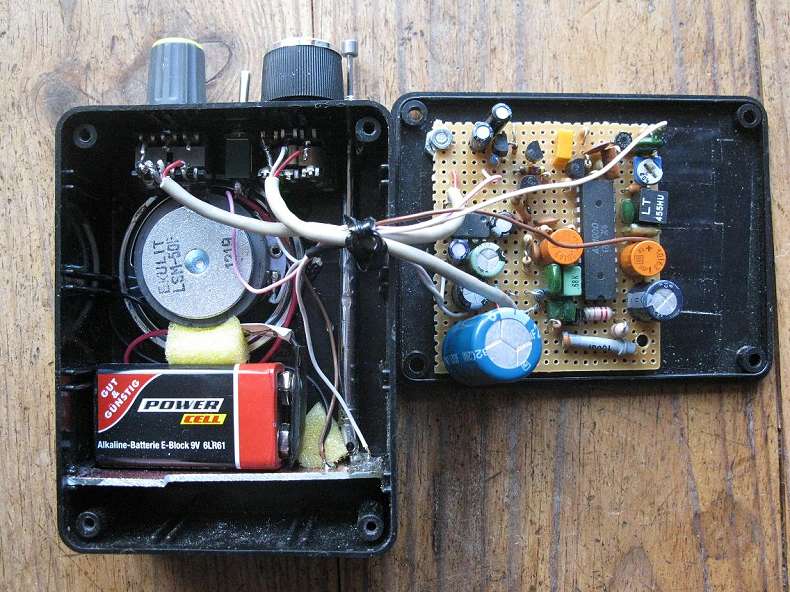
The file name is encoded with the date of collection. Signal levels are written to external files in ASCII format with time-stamps of each reading. At my location in Indiana, this range allows recording of the sunrise and sunset effects, and will give a consistent scale throughout the year. Operationally, I use a sampling interval of 15 seconds and specify recording to commence at 1 0:00 UT and to halt at 00:00 UT the following day. The executable should be called from the last line of the AUTOEXEC.BAT file, so that upon reboot the program will automatically run. Necessary inputs such as the parallel port address, frequency of data sampling, and recording start/stop times are read by the executable from a configuration file. The need to re-initiate data logging if the computer re-boots due to a power failure required the program to run without user prompts. For purposes of long-term unattended recording, I wrote a compiled QuickBASIC program which I will gladly share with other flare recording contributors upon request. Mike Gray offers a generic data acquisition program to sample and record the converter output. I plan to build a gyrator-tuned VLF receiver to accompany my older slug-tuned coil receiver to monitor SIDs on another frequency. The converter could feasibly interface four VLF receivers simultaneously. Even though the IC can be connected with eight input channels, the Gray design makes use of only four. The 12-bit digital resolution over the 4.096 volt range provides excellent signal variation discrimination. The converter attaches to the parallel port of IBM-compatible PCs, and so does not require an additional slot or internal installation. In use, I adjust the receiver gain until the output voltage at midday is about 2.5 volts.

As constructed, the converter has acceptable EMI noise emissions which, although not measured, do not interfere with VLF reception as evidenced by the recording trace collected during the first week of testing (DIAGRAM 2). The Gray QUAD-12 datalogger meets the criteria outlined by Alex Panzer for a suitable VLF receiver computer interface. All parts may be ordered from Digi-Key except for the general purpose PCB which is a standard Radio Shack component. The accompanying parts list is my selection, whereas DIAGRAM 1 imitates the original circuit of the QUAD-12 datalogger (permission from Mike Gray is gratefully acknowledged). Knowing that my soldering skills might not meet the challenge of the specified surface mount components, I sourced other parts for the project and constructed the interface. Gray cleverly packaged the IC and the five support capacitors in a DB-25 connector and backshell.
Simple vlf receiver serial#
Based on the Maxim MAX186DCPP serial A/D integrated circuit, the datalogger can easily be built in one afternoon for less than $40.

Author Mike Gray (N8KDD) describes the construction and operation of the converter in his article, "Build the QUAD- 1 2 Personal Datalogger" ('73 Amateur Radio Today, page 10, August 1996). I was seriously considering purchasing the Tandy multimeter when I read about a simple 12-bit A/D converter that required very few support components and derives its power directly from the parallel port on a small personal computer. I would never load another roll of strip-chart paper! My disgust and frustration gave way to resolve. However, when the part arrived and I discovered that my $29.95 had purchased only another flimsy needle without installation instructions. Upon ordering a replacement part, I expected to receive a complete galvanometer needle mechanism for the quoted charge.

Shortly thereafter, I accidently broke the needle on the Rustrak unit while replacing the paper. At the time of his article's publication, my SID monitoring system utilized a Rustrak recorder, and I didn't have a spare computer to dedicate to SID monitoring. Panzer discussed several desirable features of the Tandy unit such as its low noise, ease of operation and ready-to-run recording software. In a previous SID Technical Bulletin (April 1996), fellow contributor Alex Panzer described the successful interfacing of his VLF receiver to a computer via a Tandy Corporation digital multimeter. AN EASY TO BUILD A/D CONVERTER INTERFACE FOR VLF RECEIVERS


 0 kommentar(er)
0 kommentar(er)
